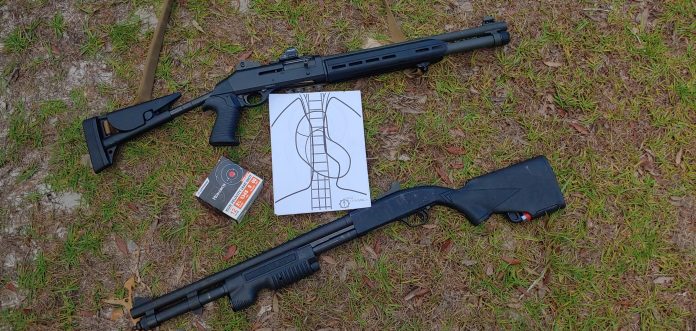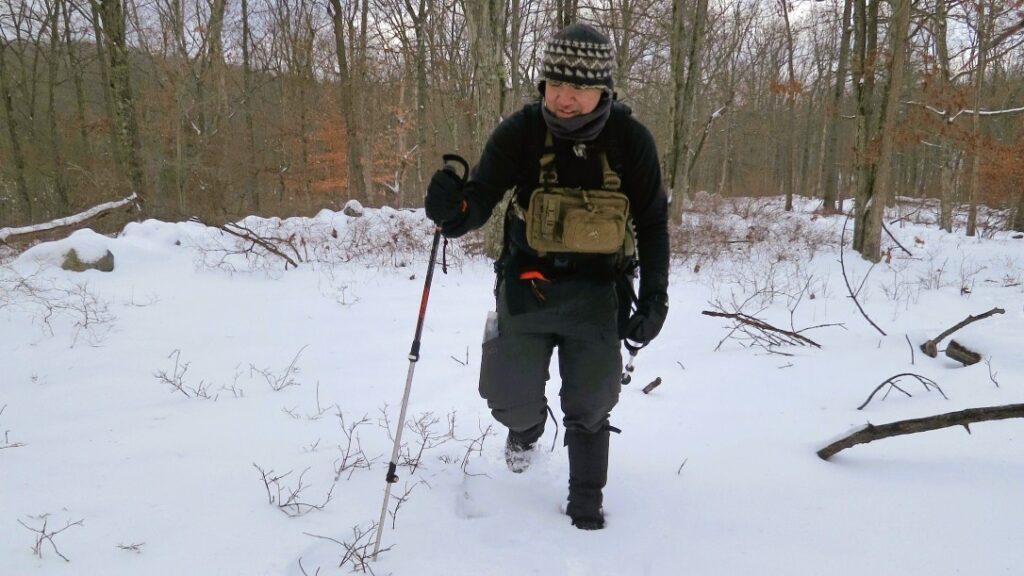Title photo: Jason Foley, owner and guide of Straight Flush Outfitters retrieving a downed crane.
Continued from Chapter 1
Sandhill Cranes
The alarm clock blared—it was 3:45 AM, and its percussive annoyance announced the beginning of the morning of my first-ever hunt. I hadn’t slept much. Perhaps it was only four hours of sleep. And that sounded generous, so maybe less. Whatever amount of time I actually slept, it didn’t matter because I was easy to rise.
My sleep had been light enough that there wasn’t any slumber to dissuade me from awakening. In fairness, it’s hard to get enough sleep when friends you don’t see often come by the previous evening for a beer and a chat. It’s also hard to sleep when giddy with anticipation, having waited over 365 calendar days for that particular morning and all.
Advertisement — Continue Reading Below
I even had my fancy Black Friday discounted Sitka pants and the rest of my outfit set aside and ready to wear, like a kid getting ready for their first day of school back in the day—after a real summer vacation that actually lasted the entire summer.
Time to Get Ready
The morning was still pitch black, and the air felt colder than the 25-degrees Fahrenheit the Jeep’s digital thermometer claimed. We waited for the rest of the group to congregate outside of a local gas station. In the meantime, breakfast was a single can of sugar-free Monster out of the gas station’s refrigerator.
Drinking the frigid can and its elixir outside of this gas station in the chilly early December Texas panhandle morning air felt like a juxtaposition. However, on an appointment like the one we had that morning with the Sandhill Cranes, this clear liquid was as important to success as the #2 12 gauge shells we brought.
Advertisement — Continue Reading Below

The Set Up
We parked at the edge of a barren wheat field a few miles outside of town. It was time to get to work, setting up an entire flock of crane decoys under the cover of darkness. The rest of the men and I in the hunting party temporarily turned into a work party. Some are offloading crane decoys from a trailer, while myself and others are staking them into the uncanny red Texas dirt found in the panhandle region.
It takes a fair bit of work to prepare a hunting field with decoys, and this was a “sizeable” flock we set up, too. Once the birds were staked it was time for the blind, something I had never seen or sat in before in my life. These blinds are amalgamations of what look like corral fences linked together and covered with natural reeds and grasses thatched to the frames.
Advertisement — Continue Reading Below
The reeds and grasses tower a few feet over the skeleton of the structure with the idea that a hunter sits on a low stool and leaps into action with a shotgun in hand when the birds fly overhead. The low stools inside the blind aren’t designed for comfort, but they sure beat the cold ground. Their seats are reminiscent of hard church pews.
A good hour and a half passes since setting up the hunting stage and the men start settling into the blind, passing along gear, shotguns, coffee mugs and energy drink cans to their respective owners.
The Long Wait
It’s about 6:45 am, with the hunting party patiently waiting for legal shooting hours…
Advertisement — Continue Reading Below
It’s 6:55 am; getting close.
Our guide Jason, the owner of Straight Flush Outfitters, starts making bird calls and doing anything he can to get the flying flocks’ attention and to come within distance of our shotguns.
The seconds are slipping away, getting us closer to legal shooting hours. By this point, the morning sun is shining, and the darkness has receded over the horizon. And by now, everyone in the hunting party has uncased their shotguns and loaded them with shells, leaving them leaning against the frame of the blind and waiting.
Advertisement — Continue Reading Below
I forgot to bring gloves and had also been outside in a very cold dawn field for nearly two hours setting up decoys and preparing. I can’t feel my hands, and I try my best to resuscitate them in my coat pockets. The guide, Jason, is our orchestra conductor and his crane calls are his wand. However, the members of the band are holding Berettas instead of violas. Our small Saturday morning concert is a 100% percussion instrument affair.
As the conductor, the idea was that if Jason managed to attract an overhead flock into the hunting zone, he’d say “Go,” and it would be time to leap out of the church-pew stool, shotgun in hand, to draw a bead on the first bird you see.

Advertisement — Continue Reading Below
It’s Go Time
That moment finally arrived.
Go!
Click.
Advertisement — Continue Reading Below
In all of the excitement, I’d forgotten to take the Beretta’s safety off. I missed my chance. No one hits any birds anyway, and my temporary embarrassment dissipates. It’s time to sit down again and top off shotguns. Several minutes pass by until any action happens, and I’m sitting there just fidgeting with anticipation.
Shooting aerial targets with shotguns is one of the most pleasurable activities known to man, and it turns into a neurological feedback loop when it’s a bird whose meat is also delicious and desirable. In other words, it’s its own type of rush. A high. I didn’t know this until a few weeks later, when I was watching a hardcore waterfowl hunting video on a marsh in Louisiana, and something came over me.
Go!
Advertisement — Continue Reading Below
Bang, Bang Ba-Bang, Bang, Bang. Hues of hulls, blue, green, red, and orange, begin littering the wheat field. One bird is down. One rather unlucky bird, in fact. This lone moronic crane managed to fly within 20 yards of our blind. I remember drawing a bead on it and calling my shot. So did the hunters to my left and my right. In fact, this specific crane had its own scientific name: Grus canadensis imprudens. It bought the farm almost immediately because at least six different shotgun blasts connected with it.
(Later that day, I remember helping to clean the breast of this same crane’s carcass and pluck its down feathers off. I knew it was the crane that got too close because its breast had a potpourri of pellets—think of a specific 1987 white Chevrolet Celebrity sedan involved in a certain high-profile bank robbery in southern California in the late 1990s.)
Uncooperative Weather
A few more flocks flew by, and a few more volleys were fired, but unfortunately, it was a slow morning. Though chilly, that Saturday was relatively warm, and when the temperature is cozy, the cranes stay in their roosts and aren’t as motivated to come feed from fields.
Texas weather, am I right?

To Be Continued In Part 3…















